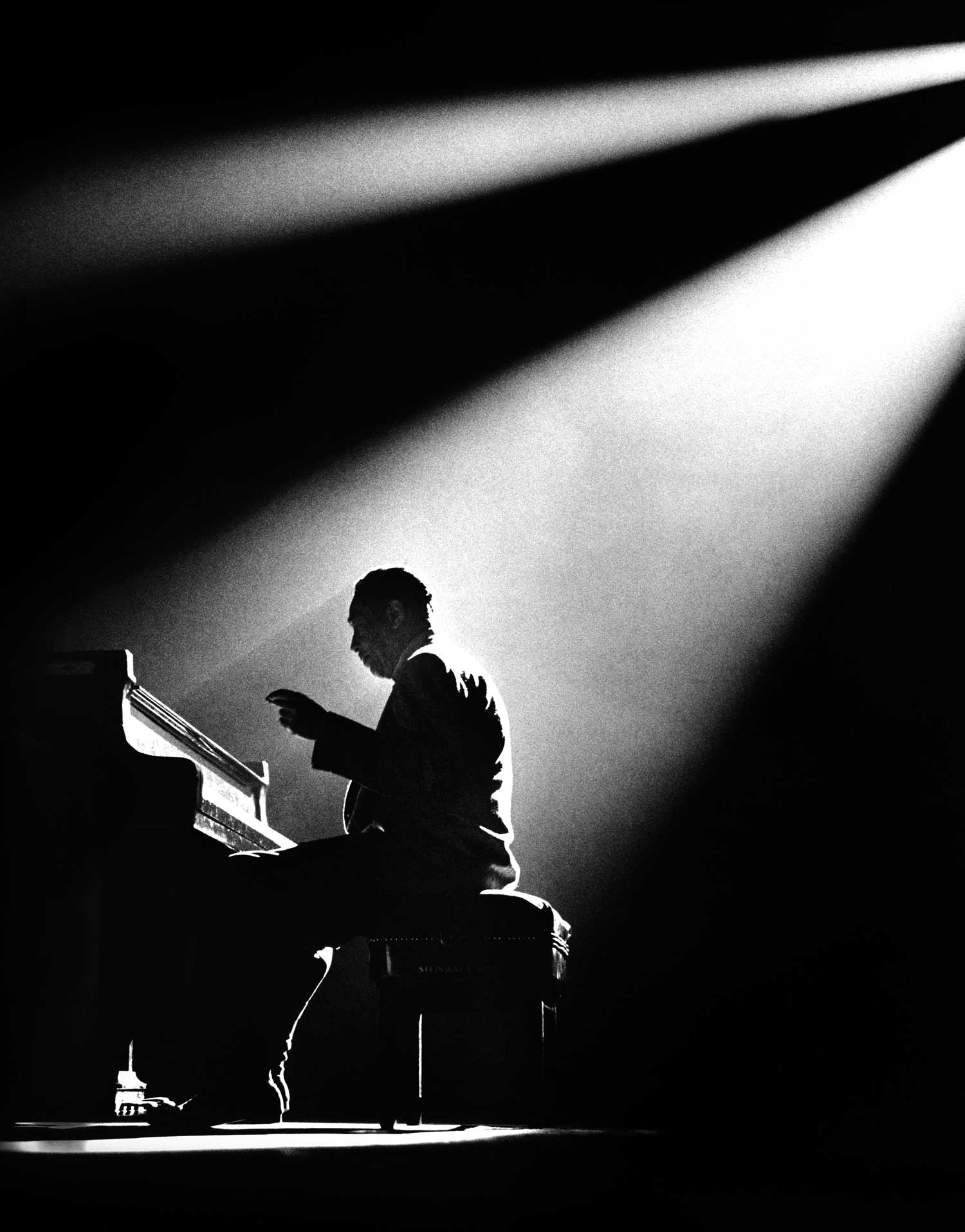In the Groove: Jazz Portraits by Herman Leonard

“When people think of jazz, their mental picture is likely one of Herman’s.”—Quincy Jones
Herman Leonard’s legacy is best represented by his photographs of some of history’s most celebrated musicians, in which he created a haunting picture of a sleek, mysterious, and exciting swath of postwar America. In documenting the jazz culture of the era, Leonard combined his artistic proficiency with his genuine love for the genre, which he once described as the only American art form that could be considered truly authentic. Operating out of a little studio in Greenwich Village, Leonard spent years frequenting the city’s vibrant nightspots in search of fresh talent to record in his “visual diary.”
His masterfully crafted pictures from the 1940s and 1950s bridge the gap between the giants of jazz’s early days and the nascent bebop generation. Looking at these photographs, it’s easy to see that they are charged with a kind of raw, emotional energy. These are people who were pouring their hearts and souls into the creation of music that would entertain and inspire millions. Leonard always counted himself lucky that he was able to see them live, to chronicle their performances, and to form lasting friendships with many of them. The subjects of the pictures are shot in stark black and white, highlighted against the darkness by stage lights and oftentimes surrounded by swirls of luminous cigarette smoke—a juxtaposition that gives the whole scene a noir-ish and vaguely otherworldly aesthetic. Leonard was probably only half-joking when he told an interviewer that he would never be able to truly recapture the feel of the period because “nobody smokes anymore.”
Leonard rarely staged his photos; instead he preferred to document the spontaneous act of creation, when a slight gesture, or a facial expression, or a trick of the light would make all the difference. Using this technique, Leonard was able to preserve for posterity the images of Duke Ellington elegantly playing his piano in a pool of light, of Thelonious Monk writing feverishly in his musical notebook, of Lester Young’s porkpie hat resting on top of his empty saxophone case—all beautiful and infinitesimal slices of time, as fleeting as the burning cigarette that rests on top of the empty Coke bottle next to Young’s case.